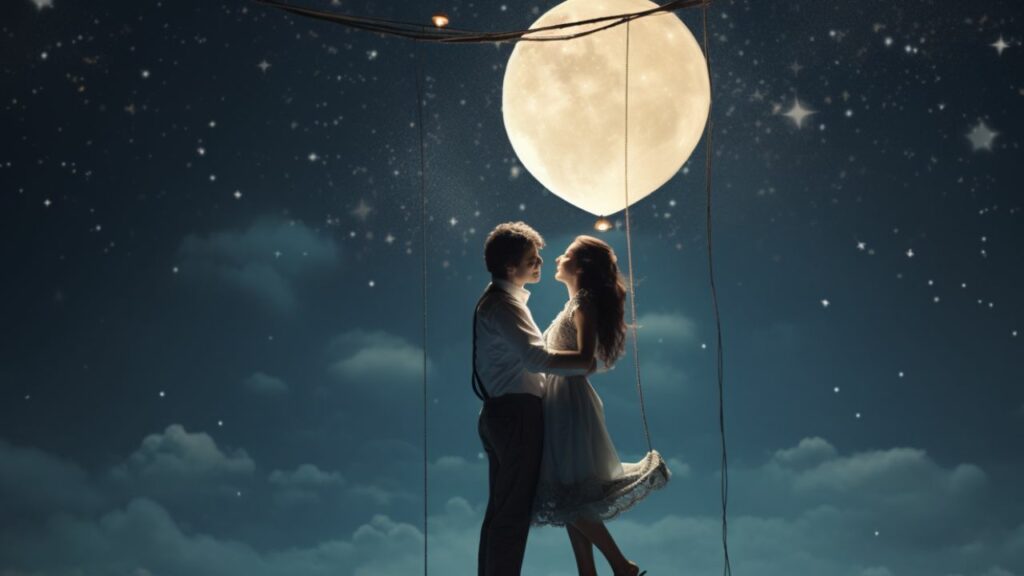Diving headfirst into the complex world of emotions, I’ve often found myself tangled in an intriguing web – lust vs. love. It’s a paradox that has intrigued poets, philosophers, and everyday individuals alike. Is it lust you’re feeling, or is it love? The distinction isn’t always clear and can be blurred by intense feelings and passionate moments.
Discerning between fleeting lust and enduring love becomes quite challenging when we’re caught up in these whirlwinds of emotion. Lust is typically marked by a powerful desire – think physical attraction or infatuation – while love tends to involve deeper connection and commitment. But the tricky part lies in how similarly these two emotions can present themselves initially.
In this ever-evolving conversation around lust versus love, I’ll offer my insights drawn from personal experiences, professional resources, and psychological studies. We’ll explore the characteristics of each and their interplay within relationships today. By shedding light on these emotional phenomena, we might just unravel some of the mystery surrounding our hearts’ desires.
Understanding Lust: A Deep Dive
I’ve spent a lot of time pondering about lust. It’s one of those intense feelings that can sweep you off your feet, leaving you feeling exhilarated and bewildered all at once. But what exactly is lust? Essentially, it’s an overwhelming desire or craving often associated with sexual attraction. When we talk about lust in this context, we’re referring to the heady mix of hormones and emotions that make up raw physical attraction.
Now let’s delve into the science behind it for a moment. Lust is primarily driven by the sex hormones testosterone and estrogen which are present in both men and women. These hormones trigger an intense longing for sexual gratification and physically appealing attributes.
Here are some intriguing statistics:
| Hormone | Men (avg levels) | Women (avg levels) |
|---|---|---|
| Testosterone | 270-1070 ng/dL | 15-70 ng/dL |
| Estrogen | 10-40 pg/mL | 30-400 pg/mL |
(Note: These figures are average hormone levels in adults)
In the throes of lust, our brains release dopamine – a neurotransmitter linked with reward and pleasure – sending us on an emotional high where reason often takes a backseat. This might explain why people sometimes do reckless things when they’re ‘in lust’.
But it’s important to remember that while lust can be thrilling and exciting, it isn’t always long-lasting. The intense desire tends to diminish over time as familiarity sets in or if not complemented with other forms of intimacy.
So there you have it – a deep dive into understanding lust. While it may be sweeping & passionate, it certainly doesn’t encapsulate everything love has to offer – but more on that later!
Defining Love: An In-Depth Look
Love is a complex emotion that has baffled poets, philosophers, and psychologists for centuries. It’s more than just intense affection or attraction toward someone. It goes deeper, often associated with selfless acts and profound feelings of connection.
When you’re in love, you care deeply about the other person’s well-being and are willing to sacrifice your own comfort and happiness for theirs. This isn’t fleeting or superficial—it’s a sustained emotional investment in another individual. To give an example, imagine staying up all night to care for a sick loved one without a second thought.
In contrast to lust—which is predominantly driven by physical attraction—love encompasses emotional intimacy too. A study conducted by Rutgers University found that when individuals are shown images of their beloved ones, areas of the brain associated with deep attachment light up significantly more than when they see pictures of physically attractive acquaintances.
| Lust | Love | |
|---|---|---|
| Rutgers University Study Brain Activation | Low | High |
While love can certainly involve physical attraction (and often does), it also involves trust, respect, and mutual understanding—a connection beyond the surface. Think about long-term relationships or marriage; these bonds are often built on shared experiences and commitment rather than just physical allure.
But if there’s one thing I want to emphasize here, it’s that love isn’t always easy or straightforward—and that’s okay! It might be messy at times or even challenging, but those hurdles only make the bond stronger when overcome together.
So, what really sets love apart from lust? Well, it’s not a sudden rush of adrenaline or defined by temporary desire. Instead, it’s characterized by patience and endurance—it sticks around even after the initial spark fades away.
The Emotional Aspects of Lust and Love
When you examine their emotional aspects, lust and love can seem incredibly similar at first glance. They’re both intense, passionate feelings that can sweep you off your feet. But beneath the surface, they diverge in significant ways.
Lust is primarily driven by physical desire. It’s that burning need to touch and be close to someone, fueled by an intense sexual attraction. When we’re in the throes of lust, our brains release a cocktail of chemicals like norepinephrine, serotonin, and dopamine which give us those fluttery butterflies in the stomach.
On the flip side, love extends beyond physical attraction. It’s about deep emotional connection and intimacy – you’re just as interested in their thoughts and dreams as you are in their body. When we fall in love, our brain secretes hormones such as oxytocin (the “love hormone”) and vasopressin which promote bonding and attachment.
Here’s a quick comparison:
| Aspect | Lust | Love |
|---|---|---|
| Main Driver | Physical desire | Emotional connection |
| Brain Chemicals Involved | Norepinephrine, Serotonin, Dopamine | Oxytocin, Vasopressin |
Yet it’s not always black or white; sometimes lust evolves into love over time as a relationship deepens. And other times, love might start with a spark of lust! However, it pans out for each individual, depending on personal experiences and perspectives.
Still pondering whether it’s lust or love? Reflect upon these points:
- Do I care more about this person’s body or mind?
- Am I interested in their day-to-day life?
- Can I see a future with them?
Remember: Understanding how your emotions tie into your relationships is key to maintaining healthy dynamics.
Lust vs Love: Key Differences Explored
I’ve often found myself pondering the intriguing realm of romantic feelings, specifically the contrast between lust and love. Although these two emotions are frequently confused, they’re distinctly different in several crucial ways.
Let’s take a quick look at lust first. It’s primarily a physical attraction that focuses on outward appearance and can be summed up as an intense desire or craving. Lust is typically characterized by short-term gratification with little consideration for long-term compatibility.
On the other side of this emotional coin, we have love. This emotion runs deep, transcending mere physical attraction to encompass mental and emotional connection as well. When you’re in love, you value your partner’s personality traits, quirks, and overall character just as much as their physical attributes—if not more so. Love grows over time and fosters mutual respect, trust, compassion, and shared goals.
Here are some key differences:
- Duration: Lust usually fades quickly once satisfied, whereas love grows stronger over time.
- Focus: While lust focuses mainly on physical satisfaction, love values emotional connection and intellectual compatibility too.
- Selfishness vs Selflessness: Lust seeks personal pleasure while love prioritizes the other person’s happiness.
Now let’s bring some science into our discussion! According to research conducted by psychologist Dr. Helen Fisher—outlined in her book “Why We Love”—the brain releases different chemicals when experiencing lust (like testosterone) compared to when it experiences love (such as oxytocin). In essence:
| Lust | Love | |
|---|---|---|
| Chemicals | Testosterone & Estrogen | Oxytocin & Vasopressin |
This information not only provides us with fascinating insights into human behavior but also aids us in distinguishing between these two complex emotions more accurately. To sum it up, while both lust and love can be wonderful experiences, they vary significantly in terms of depth, duration, and focus.
How to Identify Between Lust and Love
Distinguishing between love and lust can be quite a challenge. It’s especially tricky when you’re caught up in the whirlwind of emotions that comes with a new relationship. Here, I’ll share some insights to help you differentiate between these two powerful feelings.
First off, let’s talk about the defining characteristics of lust. Generally, it’s driven by physical attraction and an intense desire for someone else’s body. You might find yourself constantly thinking about getting intimate with this person. In such situations, your focus is largely on fulfilling your own needs rather than considering theirs. When we peel back the layers, we realize that lust is typically more superficial — it doesn’t require deep emotional connection or commitment.
On the flip side, love tends to be more complex and multifaceted. It involves looking beyond surface-level attractiveness to appreciate someone for who they truly are — quirks, flaws, and all. When you’re in love, you’ll likely feel a strong empathy towards your partner; their happiness becomes as important as yours.
Here are some practical signs to look out for:
- Lust:
- Intense physical attraction
- Focus on self-gratification
- Little interest in non-sexual activities together
- Love:
- Strong emotional bond
- Desire for shared experiences beyond intimacy
- Concern for each other’s well-being
Of course there are overlaps between lust and love — after all, many loving relationships do start with a spark of physical attraction! But as deeper feelings develop, true love often grows over time while transient lust fades away.
It’s crucial not just to rely on these signs but also to listen to your gut feeling — sometimes, our instincts know what our minds can’t articulate yet!
The Role of Time in Shaping Lust and Love
Let’s delve into how time plays a pivotal role in distinguishing between lust and love. When you’re caught up in the throes of attraction, it’s easy to mistake lust for something deeper. But as the clock ticks on, the differences start to become apparent.
Lust, by its very nature, is often short-lived. That intense physical desire hits you like a ton of bricks. You’re consumed by thoughts of passion and physical intimacy. This phase is characterized by high levels of hormones such as testosterone and estrogen, which are responsible for these feelings.
| Hormone | Effect |
|---------|--------|
|Testosterone | Drives sexual desire |
|Estrogen | Regulates libido |
On the other hand, love doesn’t happen overnight; it takes time to grow. Love comes with understanding your partner’s strengths, weaknesses, dreams, and fears. It means seeing beyond the surface attractiveness to appreciate what lies beneath.
One key hormone associated with love is oxytocin, known as ‘the cuddle hormone.’ This brain chemical strengthens social bonds and deepens feelings of attachment.
| Hormone | Effect |
|---------|--------|
|Oxytocin | Deepens emotional connection |
But let me highlight – no definitive timeline separates lust from love. For some people, what starts out as lust can evolve into love over time. On other occasions, those initial intense desires may fade without developing into anything deeper.
Here are a few signs indicating a shift from lust to love:
- Your attraction becomes less about physique.
- You start making long-term plans together.
- Their happiness genuinely matters to you.
Time has a way of peeling back layers, revealing our true emotions. So, while it might be challenging to differentiate between these two powerful experiences at first glance – giving it time can make things clearer.
Psychological Perspectives on Lust vs. Love
Diving headfirst into the psychological depths of lust and love, we find fascinating differences between these two powerful emotions. Psychologists often distinguish lust from love in terms of their primary drives – lust being driven by sexual desires while love is more about emotional connection.
From a biological perspective, it’s interesting to note that different hormones are at play when we’re in the throes of lust versus when we’re deeply in love. Lust triggers the release of sex hormones like testosterone and estrogen. On the other hand, feelings of deep affection and attachment associated with love stimulate the production of oxytocin and vasopressin.
| Emotion | Primary Hormones |
|---|---|
| Lust | Testosterone, Estrogen |
| Love | Oxytocin, Vasopressin |
When it comes to brain activity, too, there’s a clear distinction between lust and love. Studies show that brain regions involved in pleasure response light up during states of intense lust. Conversely, areas tied to bonding and attachment become active when one is experiencing profound feelings of love.
- Lust: Activates pleasure centers
- Love: Engages areas related to bonding
Another compelling viewpoint stems from psychologist Robert Sternberg’s Triangular Theory of Love, which proposes three components: intimacy, passion, and commitment as key ingredients for various types of love. According to this theory:
- Passion alone might indicate infatuation (akin to lust)
- Intimacy plus passion could suggest romantic love
- A combination of all three; intimacy, passion, and commitment denotes consummate or “complete” love
In understanding these psychological perspectives on lust vs. love, we can better navigate our own emotions while fostering healthier relationships.
Conclusion: Balancing Lust and Love
Balancing love and lust isn’t always easy. I’ve found that it’s a delicate dance of passion and profundity, a choreographed blend of physical attraction and emotional connection. But in the end, it’s worth striving for.
Remember, lust is transient. It’ll come on strong but eventually ebbs away. Think of it like fireworks—it burns brightly, momentarily illuminating the darkness before fading into nothingness.
Love, on the other hand, is enduring. It doesn’t just burn; it glows steadily, providing constant light and warmth even in the darkest times.
Don’t get me wrong—I’m not saying lust is bad or unnecessary. Quite contrary! Lust provides that initial spark, lights up our senses, and drives us towards potential partners.
However:
- Understand lust’s fleeting nature
- Don’t mistake intensity for longevity
- Recognize when you’re led by desire rather than deeper feelings
These pointers will help you stay firmly grounded while enjoying the passionate highs of new relationships.
When you balance these two powerful forces—lust and love—you create something incredibly special: a relationship filled with excitement yet grounded in genuine affection and respect—a bond that can stand life’s tests.
Striking this balance may seem challenging at first glance; nonetheless, with patience, understanding—and yes—a healthy dose of both love and lust—it’s more than possible to achieve.



